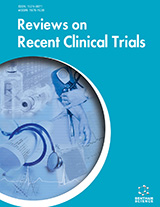Abstract
The transradial approach for percutaneous coronary intervention (both diagnostic and therapeutic procedures) has gained progressive acceptance in the last years.
Transradial access has been shown, also, to have several advantages over transfemoral approach; the radial artery is easily compressible, thus bleeding is controllable and hemorrhagic complications are significantly reduced. Furthermore, periprocedural bleeding and vascular complications after percutaneous coronary intervention are associated with worse clinical outcomes and increased short and long - mortality.
With increasing experience and availability of dedicated equipment this technique is now being increasingly used for complex catheter intervention.
The main purpose of this review is to highlight the benefits, complications and problems with transradial approach compared with conventional transfemoral approach.
Keywords: Coronary artery disease, coronary angiography, radial artery, acute myocardial infarction, bleeding
Reviews on Recent Clinical Trials
Title:Radial Approach for Percutaneous Coronary Intervention
Volume: 7 Issue: 2
Author(s): Andrea Rognoni, Alessandro Lupi, Mara Sansa, Gioel Gabrio Secco, Matteo Santagostino and Angelo Sante Bongo
Affiliation:
Keywords: Coronary artery disease, coronary angiography, radial artery, acute myocardial infarction, bleeding
Abstract: The transradial approach for percutaneous coronary intervention (both diagnostic and therapeutic procedures) has gained progressive acceptance in the last years.
Transradial access has been shown, also, to have several advantages over transfemoral approach; the radial artery is easily compressible, thus bleeding is controllable and hemorrhagic complications are significantly reduced. Furthermore, periprocedural bleeding and vascular complications after percutaneous coronary intervention are associated with worse clinical outcomes and increased short and long - mortality.
With increasing experience and availability of dedicated equipment this technique is now being increasingly used for complex catheter intervention.
The main purpose of this review is to highlight the benefits, complications and problems with transradial approach compared with conventional transfemoral approach.
Export Options
About this article
Cite this article as:
Rognoni Andrea, Lupi Alessandro, Sansa Mara, Gabrio Secco Gioel, Santagostino Matteo and Sante Bongo Angelo, Radial Approach for Percutaneous Coronary Intervention, Reviews on Recent Clinical Trials 2012; 7 (2) . https://dx.doi.org/10.2174/157488712800100251
| DOI https://dx.doi.org/10.2174/157488712800100251 |
Print ISSN 1574-8871 |
| Publisher Name Bentham Science Publisher |
Online ISSN 1876-1038 |
 18
18
- Author Guidelines
- Bentham Author Support Services (BASS)
- Graphical Abstracts
- Fabricating and Stating False Information
- Research Misconduct
- Post Publication Discussions and Corrections
- Publishing Ethics and Rectitude
- Increase Visibility of Your Article
- Archiving Policies
- Peer Review Workflow
- Order Your Article Before Print
- Promote Your Article
- Manuscript Transfer Facility
- Editorial Policies
- Allegations from Whistleblowers
Related Articles
-
The Role of Blood-Brain Barrier Studies in the Pharmaceutical Industry
Current Drug Metabolism 5'-Nucleotidases, Nucleosides and their Distribution in the Brain: Pathological and Therapeutic Implications
Current Medicinal Chemistry β-Sheet Breakers for Alzheimers Disease Therapy
Current Drug Targets Heterocyclic N-Oxides - An Emerging Class of Therapeutic Agents
Current Medicinal Chemistry Ontogeny of Hepatic Glucuronidation; Methods and Results
Current Drug Metabolism Target Based Drug Design - A Reality in Virtual Sphere
Current Medicinal Chemistry Proteolytic Events of HIV-1 Replication as Targets for Therapeutic Intervention
Current Pharmaceutical Design Mechanisms of the Blunting of the Sympatho-Adrenal Response: A Theory
Current Diabetes Reviews Neurovascular Complications of Ovarian Hyperstimulation Syndrome (OHSS): From Pathophysiology to Recent Treatment Options
Recent Patents on Endocrine, Metabolic & Immune Drug Discovery (Discontinued) Chemoprevention of Colorectal Cancer: Progress or Pipedream?
Current Cancer Therapy Reviews TRPM Channels Phosphorylation as a Potential Bridge Between Old Signals and Novel Regulatory Mechanisms of Insulin Secretion
Current Diabetes Reviews Effects of Physical Exercise on Inflammatory Markers of Atherosclerosis
Current Pharmaceutical Design Animal Models of Lupus and Lupus Nephritis
Current Pharmaceutical Design Glycolipids as Immune Modulatory Tools
Mini-Reviews in Medicinal Chemistry Mechanisms of Tau Self-Aggregation and Neurotoxicity
Current Alzheimer Research New Frontiers in the Therapeutic Management of Transplant Rejection
Current Pharmaceutical Design Regulation of Leptin Receptor Expression in Human Polarized Caco-2/15 Cells
Endocrine, Metabolic & Immune Disorders - Drug Targets Consequences of Iron Accumulation in Microglia and its Implications in Neuropathological Conditions
CNS & Neurological Disorders - Drug Targets Cinnamic Acid Derivatives in Tuberculosis, Malaria and Cardiovascular Diseases - A Review
Current Organic Chemistry Measurement of Physical Changes in the Myocardium for Development of Novel Methods for Diagnosing Ischemia
Current Cardiology Reviews


























